When asked, "What is frequency?"... how would you answer?
People of my generation, those born before the 1970s, might recall the numbers engraved on the tuning indicators of old radios, right? Yes, that's it.
In this blog, we've touched on the topic of frequency several times. But when asked what frequency really is, many might find themselves pondering the question.
Today, I'd like to discuss the topic of frequency, which, while being an ancient concept, has some fresh developments to consider.
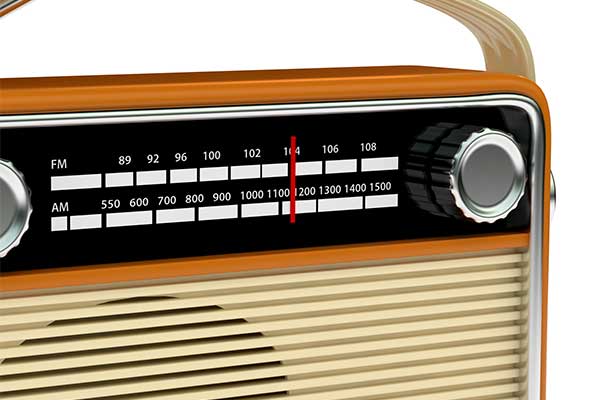
The term "frequency" engraved on old radios. When you set it to AM radio mode and tune the dial to a certain frequency, a sine wave with that frequency is generated inside the radio. When this sine wave is combined with the received wave, which has been converted from radio waves to electrical signals through the antenna, magically, two waves are produced inside the radio. These two waves consist of one with a very high frequency and the other with a very low frequency.
And then, a filter is applied to allow only the wave with the lower frequency to pass through. The signal after passing through this filter is the "sound" that came on the AM radio wave. This process is called demodulation. In FM radio, an additional step is taken to extract the sound. Moreover, there are various other methods for demodulation.
By changing the tuning frequency, you can distinguish sounds transmitted from various broadcasting stations. Broadcasting stations are assigned different frequencies because if they were on the same frequency, they would interfere with each other.
However, this interference isn't always a serious issue all the time.,
Frequency reuse
For instance, let's assume there are two broadcasting stations, Station A and Station B, both assigned the same frequency. We'll suppose that Station A and Station B are located at distant places from each other.
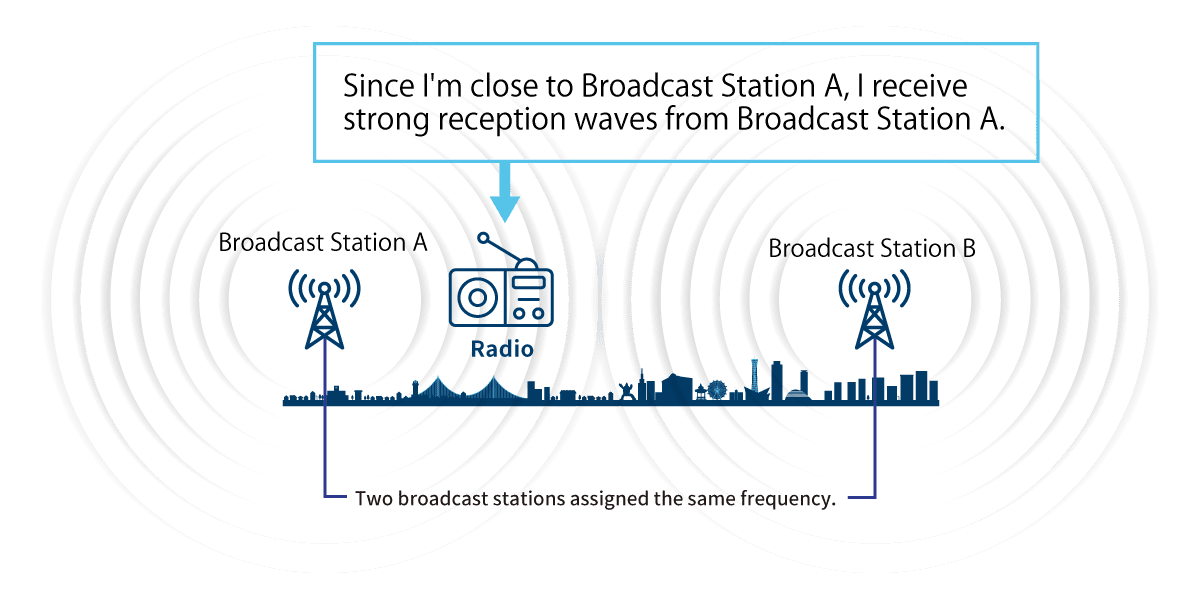
Let's say the radio is situated near Broadcasting Station A. Because of its proximity to Station A, the radio will receive a signal with a large power from Station A. On the other hand, the radio will receive the signal from Broadcasting Station B at a relatively lower power due to the greater distance. If the radio receives a signal from Station A with a sufficiently higher power than the signal from Station B, it can essentially ignore any interference from Station B. Similarly, if the radio is located near Broadcasting Station B, it can disregard the interfering signals from Broadcasting Station A.
This is called frequency reuse.
Broadcast stations A and B, by being located in distant places from each other, can spatially segregate and reuse the same frequency. This frequency reuse is adopted in most civil communication systems such as television, radio, and mobile phones.
Frequency sharing
What happens if the radio is positioned roughly halfway between Broadcast Station A and Broadcast Station B?
At this point, the radio will receive signals from both Broadcast Station A and Broadcast Station B at roughly the same strength. They will interfere with each other, making it impossible to distinguish the sound from either station. In this area, the frequency assigned to both Broadcast Station A and Broadcast Station B cannot be used. It's quite wasteful, isn't it?
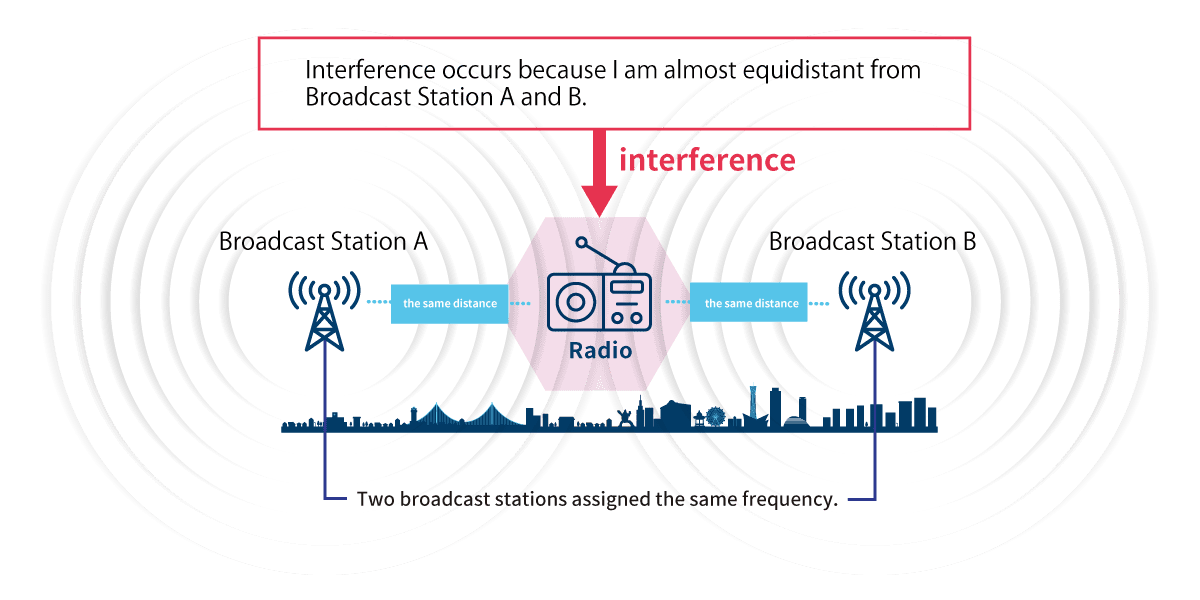
Now, let's consider placing a third broadcasting station, Station C, close to the radio. While Broadcast Stations A and B are far from the radio, Broadcast Station C is located at a very close distance.
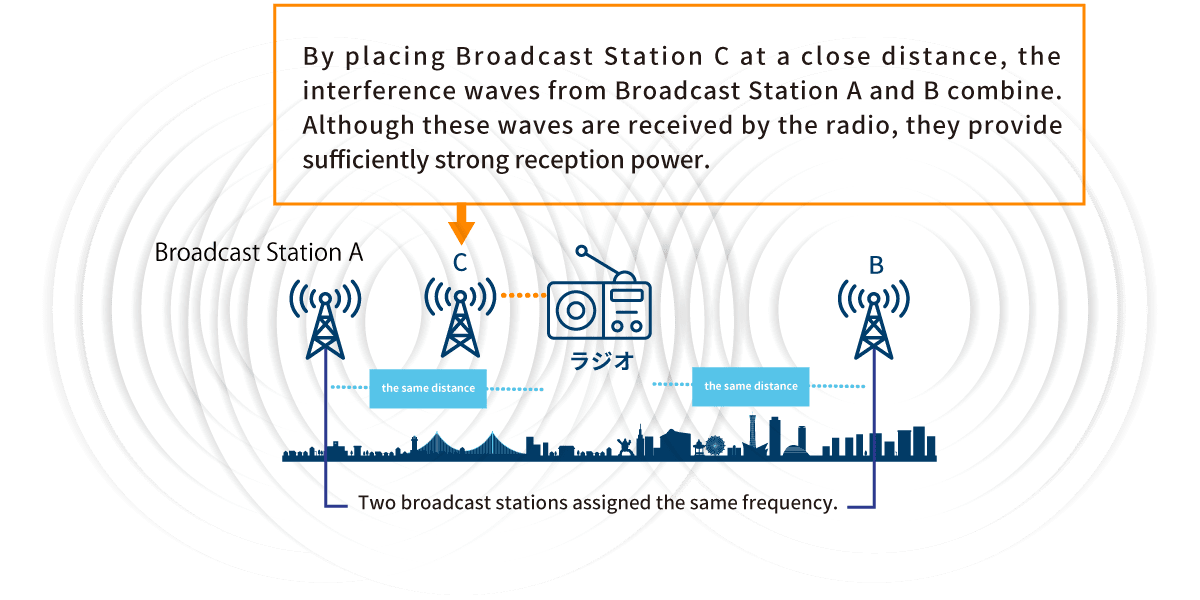
What would happen if we assign the same frequency to Broadcast Station C as Broadcast Stations A and B, and have it broadcast different content?
At this time, the radio receives interference from both Broadcast Stations A and B. However, since Broadcast Station C is located very close to the radio, the received signal strength from Station C is sufficiently strong. Although the interfering waves from Broadcast Stations A and B are combined and received by the radio, if the radio can receive the signal from Broadcast Station C with a much higher power, it can overcome these interference waves and clearly listen to the sound from Broadcast Station C.
This is called frequency sharing, and this frequency is referred to as the "white space" in the area near Broadcast Station C.
There is a very important rule for frequency sharing. If Broadcast Station C transmits with too strong a signal, it will interfere with radios located near Broadcast Stations A and B. Although Broadcast Stations A and B had been broadcasting earlier and were efficiently reusing the frequency by being spaced apart, it would be very problematic if the newly established Broadcast Station C suddenly interfered with their respective coverage areas.
To avoid this problem, when sharing frequencies, Broadcast Station C is limited to transmitting at a lower power. By ensuring that the signal from Broadcast Station C causes only negligible interference to radios in the areas of Broadcast Stations A and B, it's necessary to suppress the output of Station C's radio waves. Therefore, the coverage area of Broadcast Station C will be much smaller compared to the areas covered by Broadcast Stations A or B.
The famous pioneer of frequency sharing: "FM Transmitter"
A popular precursor in the realm of frequency sharing is undoubtedly the FM transmitter. In the past, car audio was mainly limited to radios. Responding to the demand of wanting to listen to cassette tapes in vehicles, the FM transmitter was born. It converted the audio output of a cassette player into a faint FM broadcast signal, allowing it to be played through a car radio. This transmission was confined within the car, with a range of about 1 to 2 meters. It was a device that transmitted the sound of the cassette tape using a very weak radio wave.
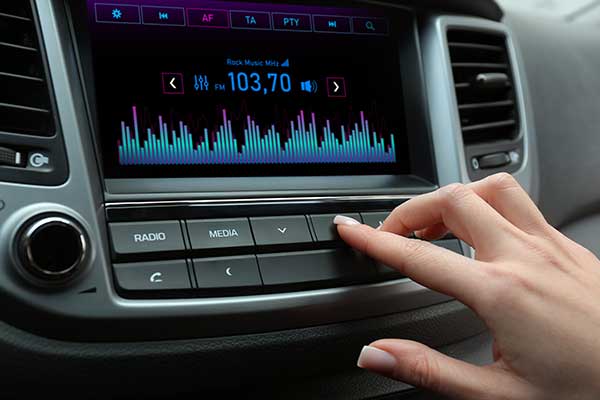
Popular examples of frequency sharing in mobile communication
Meanwhile, a recent popular example of frequency sharing in mobile communication is the coexistence of Wi-Fi and radar in the 5.6GHz band. In this frequency sharing, in addition to the regulation that Wi-Fi should only emit weak signals, an additional precaution was introduced: if a Wi-Fi device detects radar, it must immediately stop its signal and move to another channel. It's an etiquette rule that considers the precedence of the primary user.
Local5G also shares frequencies in certain bands. The available frequencies and output are restricted depending on the location, and there are constraints such as only being usable indoors. These measures facilitate frequency sharing.
Radio waves are the only resource given to humanity
"Techniques like this frequency sharing are expected to be further introduced in 6G and beyond as key technologies to alleviate the shortage of radio waves. That's how scarce frequencies have become. With the advent of mobile phones, humanity began to use radio waves more than ever before. Radio waves are the only resource given to humanity. It's becoming increasingly important to harness our ingenuity and use them efficiently.

